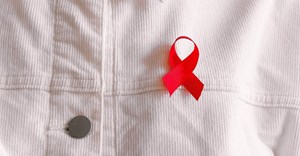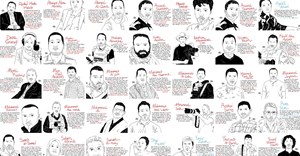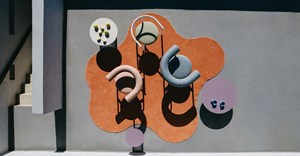Trending
Elections 2024
Jobs
- Journalist Intern Cape Town
- Show Producer Johannesburg
- Media Production Administrator Cape Town
- Scriptwriter Somerset East
- News Editor Johannesburg
- Mid-Level Sub-Editor Cape Town
- Music and Scheduling Lead Johannesburg
- Media Planner/Buyer Johannesburg
- Videography Intern Cape Town
- Online Managing Editor Johannesburg
Near the end of the binge
His main opposition, Stephan Welz in association with Sotheby's, which Welz sold to businessmen Mark Kretschmer and Jack Rosewitz two years ago, is due to hold its summer sale at Kirstenbosch in Cape Town on 24 February. They're offering more than 200 paintings and sculptures. Johannesburg art dealer Graham Britz will auction 142 works from slain businessman Brett Kebble's collection in May. Between them, they could be offering works worth more than R150m for auction — a weight the market may not be able to bear.
Is this the final blowout before the local market crashes and, like the equity and property markets, naïve buyers find themselves holding “investments” worth much less than they paid for them? “People are inclined to go overboard in boom times,” says Welz. “And it saddens me that what is essentially mall art — decorative paintings or sculptures sold by retailers in shopping centres — has crept into auctions as investment pieces at high price estimates. These will crash now.”
Investment art is usually the last asset to rise in an upturn and fall in a crash. The global financial meltdown has yet to hit SA so it's possible that good prices will be achieved. But the local experts also feel that, like SA property, the serious local collectors' market is different, with a shortage of good-quality local stock for its growing band of buyers. Many good SA works began leaving the country from the 1980s with emigrants and foreign buyers, who arbitraged local recession pricing in the plunging rand and boom pricing in hard currencies.
Welz and Kretschmer back their claim that art prices hold their own against other asset classes by referring the FM to the Mei Moses art index, produced from research by two New York university academics (see graph, opposite). The index shows art prices have been tracked within 2% of the stock exchange for over 50 years. But this does not take into account the dividends investors get from their shares. “Nor does it calculate the cost of cleaning and insuring,” adds Kretschmer. “Art is not so much an investment as an alternative store of value that collectors buy primarily for pleasure.”
And this is key to the market. Welz has been dealing and auctioning art for 50 years. There's a rhythm of nouveau riche wealth moving into the market and buying into art. “It was the Randlords in the early 20th century, followed by Eastern European, mainly Jewish, immigrants who did well in business,” says Welz. “The new Afrikaans elite arrived in the 1950s and 1960s and now we have the emerging black elite.”
Globally, the Russian oligarchs and Chinese entrepreneurs have overtaken the Middle Eastern oil magnates, who took over in the 1990s from the Japanese. “The nouveau rich want to create a new Versailles [the richly decorated palace built near Paris by France's Louis XIV] to show what they've achieved and buy art accordingly,” says Welz.
He adds: “It's only by chance that any of it maintains its value. It's their children who become the art collectors and professionals. It's significant that a decade or so ago the gallery owners were predominantly Jewish. Now they're Afrikaans. These second-generation collectors make up the broadening core of buyers auctioneers and galleries aim at.”
Over the years art prices have soared. Welz recalls a Pierneef selling in the early 1970s for R11,000, the top local price at the time. These were selling at R65,000 when FirstRand's art consultant of 42 years, Steve Bales, bought a bunch of them 10 years ago. He sold them last year for about R2m each, and Bonhams sold a particularly large piece in London recently for R11m.
“Serious collectors are indifferent to fluctuations and buy at any time when the right piece becomes available,” says Welz. “There is always a shortage of the top artists and prices hardly ever fall.” The average collector keeps his art for at least 27 years, which underpins this stability.
The most telling test of whether the SA market joins the global price decline will probably be the auction of Kebble's collection. This may be confused by what some art dealers think are too high price estimates by Britz. The Kebbles, father Roger and son, are almost unique in the first and second generation, buying art at the same time. Roger and his wife, Julie, frequented art auctions and their purchases tended to be classic first- generation.
Brett employed Britz as an adviser but appeared to have a genuine interest in serious art, though he used other people's money to buy it. The collection includes the de rigueur Pierneefs and Irma Sterns, but also Vladimir Tretchikoff of whom Bales says: “In my view it's the height of kitsch.”
Bales believes that even the second rung of artists such as Pieter Hugo Naude, Cecil Higgs and Domsaitis will hold their values. But Welz believes that knowledgeable buyers do best in a downturn in this secondary market. “Their prices tend to decline more in a downturn and rise faster in an upturn.”
But Kretschmer and gallery owners support Bales. “The real collectors still want to buy,” says Goodman Gallery curator Neil Dundas. “The truly wealthy collector is in it for the long term.”
Bales says the real opportunity lies in collecting the new young artists. “The trouble lies in deciding where to buy and how much to pay,” he adds. “Collectors see a work selling at auction and then in a gallery with a 100% mark up. Yet they are nervous of going to auctions themselves because they are not sure what to choose. And they're afraid they might scratch their noses and find themselves R1m poorer.”
Artist Hermann Niebuhr expected a tougher market and last year decided to start producing smaller, more marketable pieces. He thought part-time collectors would show some interest, but was surprised when a professional collector bought up the works at an exhibition last year. “Someone just came and bought them all at once.”
Niebuhr is starting to paint larger works again, but senses things will not get better quickly. “People are being a lot more judicious. I don't think we have taken the punch of it yet.” He is painting murals, which he didn't do before.
The SA economy has yet to feel the gale force of the global meltdown. The flow of private investment to emerging economies is set to fall from US$466bn last year to $165bn in 2009, according to the Washington-based Institute of International Finance. This disaster, along with falls in trade, the price of resources and banks not lending, is likely to make all but the most resolute collector become auction-shy. Prices at the Kebble sale could be falling from their estimates like the autumn leaves from the trees outside the auction venue.
Source: Financial Mail
Published courtesy of




















